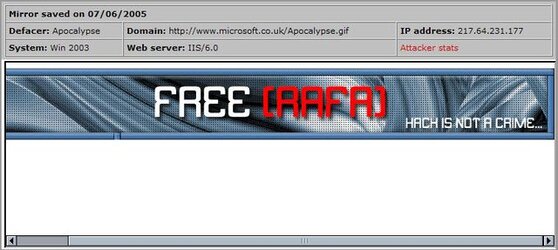Avira AntiVir Personal 13.0.0.2832
[Follow-up Build 2890 does not have the option to disable product updates. It is important to disable automatic product updates (but leave definition updates ON). Product updates may affect the Windows operating system. They should preferably be downloaded only *after* imaging the operating system partition so that if they cause problems you can reimage back to the state before product updates were installed.]
Disconnect Internet connection. Double click on Setup.exe to install the program.
Ignore Avira's warnings to uninstall Comodo Firewall or similar programs which intercept phone-home attempts.
SELECT: Custom and CHECK: I accept the End User License Agreement > Next >
UNCHECK everything when asked to install Avira Toolbars > Next > Next > Next > Next
Welcome to the Configuration Wizard > Next > Next >
Allow the configuration wizard to keep the default Express Setup options. [Do not Select All.]
(UNCHECK: Application, Games, Jokes, Programs that violate the private domain, and Unusual runtime compression.) > Next > Next >
UNCHECK: Performs a quick systems scan after the installation
Next > Finish >
*ABORT any update process when it automatically pops up!* (If you haven't disconnected Internet connection as instructed above.)
Setup the program before connecting to the internet [then block apnstub.exe and ipmgui.exe from accessing the internet].
Subscription to new virus definitions for this program is renewed automatically through product updates. It is not renewed through virus definition updates. If product updates are disabled in order to prevent installation of a newer version of the program, download the latest key file from
http://dl2.avgate.net/down/windows/hbedv.key
and either copy it to
C:\Program Files\Avira\AntiVir Desktop
and restart or go to Help > License management > click on the blue hbedv.key link > browse to the new downloaded hbedv.key > Open.
Options:
C:\Program Files\Avira\AntiVir Desktop\avcenter.exe
System Scanner (upper left) > Configuration (upper right) > Yes >
UNCHECK: Follow symbolic links (on right) > System Scanner > Scan > Action on detection >
Set for Automatic, Primary action: Ignore [if you want to just scan folders and get a scan report without deleting files or being prompted what to do if virii/malware are found.]
> Click on + next to Update > Product Update > Do not download product updates.
[This option is only for Avira Antivir product updates (Antivirus definitions will still be downloaded automatically.) Product updates should be downloaded manually by going to Update > Start product update... because they may affect the Windows operating system. They should preferably be downloaded only *after* imaging the operating system partition so that if they cause problems you can reimage back to the state before product updates were installed.]
> General > Security >
Disable being notified every time USB drive has an AUTORUN.INF file:
UNCHECK: Block autorun function
> General > Events > Select: Limit size to max. >
> General > Reports > Select: Limit number to max. >
> General > Alerts > UNCHECK everything except Dial-up connection is used
> OK
> Scheduler [on lower left] > UNCHECK everything.
Set Avira Free Antivirus to Always show in Windows Taskbar.
To disable Notifier nag screen: Windows 2000/XP Control Panel > [in Windows 7/8, click on (view by Category) System and Security first] > Administrative Tools [fourth from bottom] > Local Security Policy > Right click on Software Restriction Policies > Create New Policies SO THAT ADDITIONAL RULES SHOWS UP UNDERNEATH > Right click on Additional Rules > New Path Rule... > Browse... to the path of avnotify.exe default is
C:\Program Files (x86)\Avira\AntiVir Desktop\avnotify.exe
or
C:\Program Files\Avira\AntiVir Desktop\avnotify.exe
> Set the security level to Disallowed > OK
Also block these two files from accessing the internet, using Comodo Firewall or similar software:
C:\Program Files (x86)\Avira\AntiVir Desktop\apnstub.exe
C:\Program Files (x86)\Avira\AntiVir Desktop\ipmgui.exe
or
C:\Program Files\Avira\AntiVir Desktop\apnstub.exe
C:\Program Files\Avira\AntiVir Desktop\ipmgui.exe
For Windows XP Home or Windows 8 (non-Pro version) you would need to boot into Safe Mode and log in as Administrator, then
go to
C:\Program Files\Avira\AntiVir Desktop\avnotify.exe
and right click on it >
Properties > Security TAB >
[Under Group or usernames] SYSTEM > Edit button > CHECK: Deny for Read & execute > Apply > OK > OK
Make sure SYSTEM is set to Deny for Read & execute before rebooting.
To submit a suspected virus, go to
http://analysis.avira.com/samples/
to upload it.
You can scan multiple drives inside program options: Local Protection > Scanner > CHECK drives you wish to scan. The premium version also offers the option to scan multiple folders here. The free version does not.
In case of error message:
The procedure entry point ?_Xbad@tr1@std@@YAX4error_type@regex_constants@12@@Z could not be located in the dynamic link library MSVCP90.dll
download and install Microsoft Visual C++ 2008 SP1 Redistributable Package
http://www.microsoft.com/downloads/...FamilyID=a5c84275-3b97-4ab7-a40d-3802b2af5fc2
Manual updates can be downloaded from:
http://dl.antivir.de/down/vdf/ivdf_fusebundle_nt_en.zip
Unzip the downloaded file and copy all the contents to
C:\Program Files\Avira\AntiVir Desktop
Using two Antivirus programs at the same time:
If there are two Antivirus programs installed, you should not have two Antivirus *Guard* programs active at the same time because this would slow the system down, Windows may even have problems booting with two Antivirus guard components being active. So if installing AntiVir on a system where there already is an Antivirus program installed, do not install AntiVir guard.
Also disable the guard component of one program if using another program to scan an entire disk drive.
Default log file location is
C:\ProgramData\Avira\AntiVir Desktop\LOGFILES
or
C:\Documents and Settings\All Users\Application Data\Avira\AntiVir Desktop\LOGFILES
For older versions:
C:\Documents and Settings\All Users\Application Data\Avira\AntiVir PersonalEdition Classic\LOGFILES
C:\Program Files\Avira\AntiVir PersonalEdition Classic
or
C:\Program Files\Avira AntiVir Personal\
C:\WINDOWS\Application Data\Avira AntiVir Personal\LOGFILES
